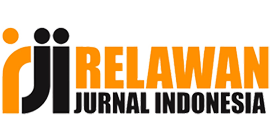PENGARUH PEMANFAATAN TEKNOLOGI DIGITAL DAN KOMPETENSI AUDITOR TERHADAP EFEKTIVITAS AUDIT DI ERA TRANSFORMASI DIGITAL
DOI:
https://doi.org/10.31539/egq0bf35Keywords:
Pemanfaatan Teknologi Digital, Kompetensi Auditor, Efektivitas Audit, Transformasi Digital, Jayapura Papua.Abstract
Era transformasi digital menuntut profesi auditor untuk beradaptasi dengan perkembangan teknologi agar proses audit tetap relevan, efisien, dan andal. Perubahan ini menjadikan penelitian mengenai pengaruh pemanfaatan teknologi digital dan kompetensi auditor terhadap efektivitas audit semakin penting untuk dilakukan, terutama di wilayah yang sedang berkembang seperti Jayapura, Papua. Penelitian ini bertujuan untuk menganalisis bagaimana pemanfaatan teknologi digital dan kompetensi auditor, baik secara parsial maupun simultan, berpengaruh terhadap efektivitas audit di era digital. Jenis penelitian yang digunakan adalah kuantitatif dengan pendekatan eksplanatori. Data primer dikumpulkan melalui penyebaran kuesioner kepada 100 auditor yang bekerja pada Kantor Akuntan Publik (KAP), Inspektorat Daerah, dan Satuan Pengawasan Internal (SPI) di Kota Jayapura. Pengambilan sampel menggunakan teknik purposive sampling dengan kriteria auditor yang telah memiliki pengalaman kerja minimal satu tahun dan pernah menggunakan sistem audit berbasis digital. Analisis data dilakukan menggunakan metode Structural Equation Modeling – Partial Least Squares (SEM-PLS) melalui perangkat lunak SmartPLS 4.0. Hasil penelitian menunjukkan bahwa pemanfaatan teknologi digital dan kompetensi auditor berpengaruh positif terhadap efektivitas audit, baik secara individual maupun simultan. Temuan ini menegaskan bahwa keberhasilan audit di era transformasi digital bergantung pada kemampuan auditor dalam memanfaatkan teknologi secara optimal. Secara teoretis, hasil penelitian ini memperkuat konsep digital competence as an enabler of audit effectiveness, sedangkan secara praktis menjadi dasar bagi lembaga audit untuk meningkatkan pelatihan digital dan pengembangan kompetensi auditor di wilayah timur Indonesia.
References
Alawattage, C., Spence, C., & Sikka, P. (2022). Auditing and accountability in the digital era: Reconstructing assurance practices. Accounting, Organizations and Society, 102, 101334. https://doi.org/10.1016/j.aos.2022.101334
Al-Nawaiseh, M., & Nawaiseh, K. (2025). The impact of audit digitalization on auditors’ performance: Evidence from Jordan. Journal of Accounting and Business Research, 45(2), 55–68. https://doi.org/10.1108/JABR-02-2025-0045
Appelbaum, D., Kogan, A., & Vasarhelyi, M. A. (2020). Big data and analytics in the modern audit engagement: Research directions and opportunities. Accounting Horizons, 34(2), 89–103. https://doi.org/10.2308/acch-52604
Appelbaum, D., & Nehmer, R. A. (2022). Auditing and AI: Understanding the impact of intelligent systems on audit practice. Journal of Emerging Technologies in Accounting, 19(1), 67–84. https://doi.org/10.2308/jeta-2021-005
Chin, W. W. (1998). The partial least squares approach for structural equation modeling. In G. A. Marcoulides (Ed.), Modern methods for business research (pp. 295–336). Lawrence Erlbaum Associates.
Cohen, A., & Sayag, G. (2021). The relationship between auditor competence and audit effectiveness: Evidence from internal audit functions. International Journal of Auditing, 25(3), 450–463. https://doi.org/10.1111/ijau.12227
Creswell, J. W., & Creswell, J. D. (2018). Research design: Qualitative, quantitative, and mixed methods approaches (5th ed.). SAGE Publications.
Davies, D. (2022). Digital transformation and innovation in auditing: Insights from academic research. IFAC Knowledge Gateway. https://doi.org/10.1016/j.accinf.2022.100715
Etikan, I., Musa, S. A., & Alkassim, R. S. (2016). Comparison of convenience sampling and purposive sampling. American Journal of Theoretical and Applied Statistics, 5(1), 1–4. https://doi.org/10.11648/j.ajtas.20160501.11
Fornell, C., & Larcker, D. F. (1981). Evaluating structural equation models with unobservable variables and measurement error. Journal of Marketing Research, 18(1), 39–50. https://doi.org/10.2307/3151312
Hair, J. F., Black, W. C., Babin, B. J., & Anderson, R. E. (2019). Multivariate data analysis (8th ed.). Cengage Learning.
Hair, J. F., Hult, G. T. M., Ringle, C. M., & Sarstedt, M. (2021). A primer on partial least squares structural equation modeling (PLS-SEM) (3rd ed.). SAGE Publications.
Henseler, J., Ringle, C. M., & Sarstedt, M. (2015). A new criterion for assessing discriminant validity in variance-based structural equation modeling. Journal of the Academy of Marketing Science, 43(1), 115–135. https://doi.org/10.1007/s11747-014-0403-8
Ibrahim, N., & Jaafar, R. (2021). Professional ethics and auditor competence in ensuring audit quality. Journal of Accounting Research, 25(2), 77–88. https://doi.org/10.1080/0969160X.2021.1892234
INTOSAI Journal. (2023). Digital by default: Creating digital culture in the Audit Board of the Republic of Indonesia. Retrieved from https://intosaijournal.org/journal-entry/digital-by-default-a-concept-of-creating-digital-culture-in-the-audit-board-of-the-republic-of-indonesia/
Krahel, J. P., & Titera, W. R. (2023). The impact of emerging technologies on the audit profession. Journal of Information Systems, 37(1), 5–18. https://doi.org/10.2308/isys-2023-002
Moll, J., & Yigitbasioglu, O. M. (2023). Digital transformation in auditing: Opportunities and challenges. International Journal of Accounting Information Systems, 50, 100655. https://doi.org/10.1016/j.accinf.2023.100655
Putri, A. L., & Nengzih, N. (2021). The effect of competence, work experience, and internal control auditor’s on audit quality (case study on internal auditors of PT BRI Tbk). Saudi Journal of Economics and Finance, 5(4), 133–140. https://doi.org/10.36348/sjef.2021.v05i04.001
Rahman, A., & Hidayat, R. (2022). Kesiapan auditor terhadap implementasi audit berbasis digital di Indonesia. Jurnal Akuntansi dan Teknologi, 14(2), 112–126. https://doi.org/10.33369/jat.14.2.112-126
Sarstedt, M., Ringle, C. M., & Hair, J. F. (2022). Partial least squares structural equation modeling: An emerging tool in business research. European Business Review, 34(2), 204–218. https://doi.org/10.1108/EBR-10-2021-0253
Sekaran, U., & Bougie, R. (2020). Research methods for business: A skill-building approach (8th ed.). Wiley.
Sihombing, R. P. (2023). Mapping internal audit quality in Indonesia’s public sector: A systematic review. Jurnal Economia, 19(1), 81–94. https://doi.org/10.21831/economia.v19i1.38073
Sugiyono. (2021). Metode penelitian kuantitatif, kualitatif, dan R&D. Alfabeta.
Thottoli, M., & Thomas, S. (2023). Digital technology skills and fraud risk judgment performance of auditors. European Proceedings of Social and Behavioural Sciences, 125, 112–123. https://doi.org/10.15405/epsbs.2023.01.12
Venkatesh, V., & Davis, F. D. (2000). A theoretical extension of the technology acceptance model: Four longitudinal field studies. Management Science, 46(2), 186–204. https://doi.org/10.1287/mnsc.46.2.186.11926
Zhou, S., & Pan, F. (2021). Robotic process automation in internal auditing: Benefits and challenges. Managerial Auditing Journal, 36(8), 1097–1114. https://doi.org/10.1108/MAJ-03-2021-301
Zulkarnain, A. (2024). Digital transformation and audit effectiveness: Empirical study on Indonesian auditors. Asian Journal of Business and Accounting, 17(1), 45–63. https://doi.org/10.22452/ajba.vol17no1.3
Downloads
Published
Issue
Section
License
Copyright (c) 2025 Putri Ratnasari Putri, Rizka Aisyah Nurjannah

This work is licensed under a Creative Commons Attribution-NonCommercial 4.0 International License.


